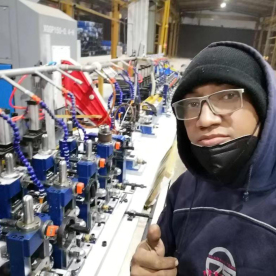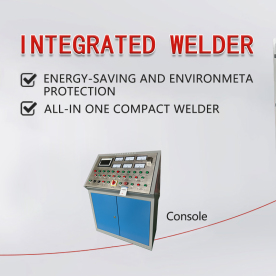[Industrial-grade induction heating equipment]Exploring the Benefits and Applications of Industrial-Grade Induction Heating Equipment in Modern Manufacturing Processes
News 2024-12-22
****Induction heating has rapidly gained prominence in the industrial sector, especially as companies strive for efficiency, precision, and sustainability in their manufacturing processes. Among the various techniques employed, industrial-grade induction heating equipment stands out due to its unique advantages, including energy efficiency, speed, and adaptability. This article delves deep into the benefits, applications, and technical aspects of industrial-grade induction heating equipment, emphasizing why it's an essential tool in today's manufacturing world.
Understanding Induction Heating
Induction heating is a non-contact heating process that uses electromagnetic fields to generate heat directly in conductive materials. When an alternating current is passed through a coil, it creates a magnetic field that induces electrical currents (also known as eddy currents) in the conductive object. This process generates heat, which can be finely controlled and directed to specific areas of the material without affecting its surroundings. This technology revolutionizes how industries approach heating applications, reducing waste and improving overall efficiency.
Key Benefits of Industrial-Grade Induction Heating Equipment
1. **Energy Efficiency**: One of the most significant advantages of industrial-grade induction heating equipment is its energy efficiency. Traditional heating methods often rely on convection or conduction, which can result in substantial heat loss. In contrast, induction heating generates heat directly within the material, minimizing energy consumption and maximizing the heating effect.
2. **Speed and Precision**: The speed at which induction heating can reach desired temperature levels is remarkable. Processes that would take hours using conventional methods can often be completed in minutes with induction heating. Additionally, the precision of heat application allows for better control over the process, resulting in improved product quality and reduced likelihood of defects.
3. **Safety and Environmentally Friendly**: Induction heating significantly reduces the risks associated with traditional heating methods. With minimal exposure to external heat sources, there's a lower chance of burns, fires, or accidents in the workplace. Furthermore, since induction heating does not require combustion, it produces less pollution and is more environmentally friendly.

Exploring the Benefits and Applications of Industrial-Grade Induction Heating Equipment in Modern Manufacturing Processes
5. **Reduced Wear and Tear**: Induction heating equipment generally experiences less thermal shock and wear compared to conventional heating methods, which can extend the lifespan of the machinery. This reliability translates to lower maintenance costs and longer equipment lifespans.
Key Applications of Industrial-Grade Induction Heating Equipment

Exploring the Benefits and Applications of Industrial-Grade Induction Heating Equipment in Modern Manufacturing Processes
2. **Automotive Manufacturing**: The automotive sector relies on induction heating for processes like brazing and hardening parts to enhance durability. Components such as gears and bearings are often treated using this technology to ensure they withstand high operational stresses.
3. **Electronics and Electrical Appliances**: In the electronics industry, induction heating is used for soldering and assembling electronic components. The precise nature of induction heating minimizes the risk of damaging sensitive components during assembly.
4. **Jewelry and Crafting**: Artisans and manufacturers of jewelry harness induction heating to create intricate designs and achieve high-quality results without compromising on the precision of heating.
5. **Food Processing**: Induction heating equipment is also finding its way into food manufacturing processes, where it helps in pasteurization and cooking with uniform heat distribution while maintaining food quality.
Conclusion

